#string instrument
Explore tagged Tumblr posts
Text
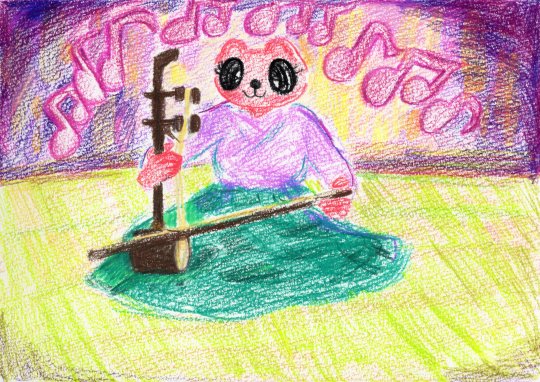
Haegeum / 해금
542 notes
·
View notes
Text

A Christmas Carol
Artist: Dante Gabriel Rossetti (English, 1828–1882)
Date: 1867
Medium: Oil on panel
Collection: Private collection
Description
A Christmas Carol was described by Rossetti’s studio assistant and friend Henry Treffry Dunn in his unpublished papers as: ‘a maiden in resplendent eastern dress of crimson with a gold thread pattern worked throughout, playing on a stringed instrument whilst she sings “Hodie Jesu Christus natus est Hallelujah”. Rossetti was a great digger of subjects from Early English Mysteries & I conjecture that he must have unearthed this fancy from such a source.’
The connection with female beauty, music and the fashion for exotic decoration and costume were central themes of the emerging English Aesthetic movement – the revolutionary artistic style of the 1860s and 1870s that combined elements of Renaissance, Oriental and Classical styles to create an époque that was to be as important in Britain as Art Nouveau was in Europe. Central to this movement was the female musician, lost in harmonic reverie allowing herself to be observed as she creates beautiful melody but also symbolises beauty itself in its most red-lipped and full-throated incarnation.
The sensuality of music fascinated Rossetti in his Aesthetic canvases. The way in which the elegant hands of the women caress the instruments and their parted lips, have strong sexual implications which are not accidental or merely a post-Freudian interpretation. There is also the suggestion that the act of creating music invites a relationship between the spectator and the viewer and although the melody is of course inaudible, the act of its creation is an invitation for mutual appreciation.
#painting#english culture#string instrument#maiden#a christmas carol#artwork#oil painting#fine art#aesthetic movement#pre raphaelite style#dante gabriel rossetti#english painter#oil on panel#sensuality#melody#oriental style#flowers#beauty#19th century painting#european art
24 notes
·
View notes
Text

#aestethic#academia aesthetic#dark academia#classical academia#romantic#romantic academia#romantic aesthetic#string instrument#viola
28 notes
·
View notes
Text


Sursanga painted in Mysore style with representation of Ganesha and Sarasvati, India, 19th century
#Sursanga#Ganesha#Sarasvati#Indian Instrument#The Metropolitan Museum Of Art#Mysore#musical instruments#19th century#string instrument#wood#sursang
23 notes
·
View notes
Text
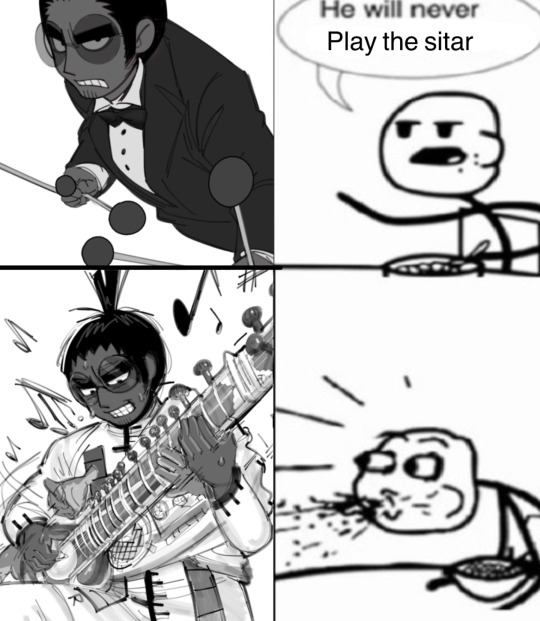


I will see this and go hell yeah
(Vishes, from December)
#art#digital art#oc#character design#original character#my oc#sitar#music instruments#musical instrument#musical instruments#instrument art#i have an instrument hyperfixation let me live#string instrument#musician oc#music inspired art#hyperfixation#band director oc#I LOVE INSTRUMENTS#carboncopycomic
34 notes
·
View notes
Text









[X / X / X] [X / 🏎️ / X] [X / X / X]
A stimboard for Wednesday Addams [Wednesday Netflix] with imagery of string instruments and art.
#🏎️ — stimboard !#stimboard#stim#kin blog#kin help#kinhelp#kinblog#fictionkin#blue#black#instrument#string instrument#cello#hands#paint#painting#art#wednesday kin#wednesday addams kin
12 notes
·
View notes
Text
#polling around#tumblr poll#poll#musical instruments#string instrument#woodwind#wind Instruments#percussion Instruments#electronic instruments#vanilla extract#bandblr#categories provided by wikipedia if you have an issue with them bring it up with the editors
28 notes
·
View notes
Text

Violin 2024
by
Technodrome1
#violin#instrument#music#symphony#art#fine art#drawing#sketch#classical music#mandolin#string instrument
15 notes
·
View notes
Text
Fun Facts About Banjos: The Iconic String Instrument
The banjo is more than just a string instrument; it’s a cultural phenomenon that has brought joy to music lovers around the world for centuries. With its unique sound and vibrant history, the banjo is worth exploring in greater detail. Here are some fun facts about this iconic instrument that might surprise you!
Origins Rooted in Africa
The banjo has deep roots in African traditions, with its ancestors likely arriving in the Americas during the slave trade. The African instrument known as the "ngoni" is one of the closest relatives to the modern banjo, featuring a similar body shape and string arrangement. The banjo we know today evolved from these early designs, blending various cultural influences along the way.
The Early Banjo: A Different Look
Early banjos were quite different from the ones we see today. The first banjos were made from natural materials, such as animal skin for the drumhead and wood for the body. Some scholars believe that the original banjos had only four strings, compared to the five-string banjos that became popular in the 19th century. As the instrument evolved, its design diversified, leading to the creation of various styles and tunings.
The Five-String Phenomenon
The five-string banjo is perhaps the most recognized form of the instrument. The fifth string is shorter and usually placed near the neck, providing a unique playing style. This string is often referred to as the "drone string," and it plays a crucial role in the characteristic sound of bluegrass and folk music. The five-string banjo was popularized by musicians like Earl Scruggs, who developed a distinctive picking style known as "Scruggs style."
It’s Not Just for Country Music
While the banjo is most commonly associated with country and bluegrass music, its versatility spans multiple genres. You'll find the banjo in folk, jazz, rock, and even classical music. Artists such as Bela Fleck and the Flecktones showcase the instrument’s adaptability in progressive and experimental music. With its bright, twangy tone, the banjo can enhance any genre and surprise audiences with its range and expressiveness.
A Symbol of American Culture
The banjo has become a symbol of American culture and identity. It played a significant role in the development of American folk music and has been featured prominently in countless songs and performances. The instrument even found a place in popular culture through its appearances in movies, cartoons, and television shows, often embodying a sense of Americana that resonates deeply with audiences.
Banjos Are Still Evolving
Today, banjos are continually evolving, with modern luthiers experimenting with materials and designs to create new sounds. Some musicians have begun to explore electric banjos, while others incorporate unconventional techniques and effects. The banjo's resilience and adaptability prove that this beloved instrument is always ready for a new chapter in its storied legacy.
The banjo is more than just an instrument; it's a vital part of music history that continues to inspire generations of musicians and listeners alike. Whether plucking the strings around a campfire or jamming with a band, the banjo's joyful sound is sure to create memorable moments. So next time you hear the banjo in a song, remember these fun facts and appreciate the rich history behind this enchanting instrument!
#banjo#fun facts#music history#string instrument#bluegrass#country music#folk music#American culture#musical instrument#banjo facts#cultural heritage#acoustic instruments#Bela Fleck#Scruggs style#instrument evolution#traditional music#jazz#electric banjo#musical roots#Americana
2 notes
·
View notes
Text

Day 30 - Violin
Decided to do the Inktober Challenge this month, doing my Simple Things drawings - which I haven't done in a few years!
Feels nice to do traditional ink drawings again.
At some point I'll upload these drawings as cards on my Etsy store.
#inktober#inktober 2024#inktober challenge#day 30#violin#musical instrument#string instrument#music#traditional art#drawing#ink drawing#simple things#hotcheeto89#lunarcartoonist
2 notes
·
View notes
Text

self-insert for a shared oc universe!! this is the patron saint of string instruments :3c
#my art#oc#self insert#self insert oc#string instrument#gijinka#instrument gijinka#mine#self sona#artist persona#persona
3 notes
·
View notes
Text

Thematic typeface of string instruments
19 notes
·
View notes
Text
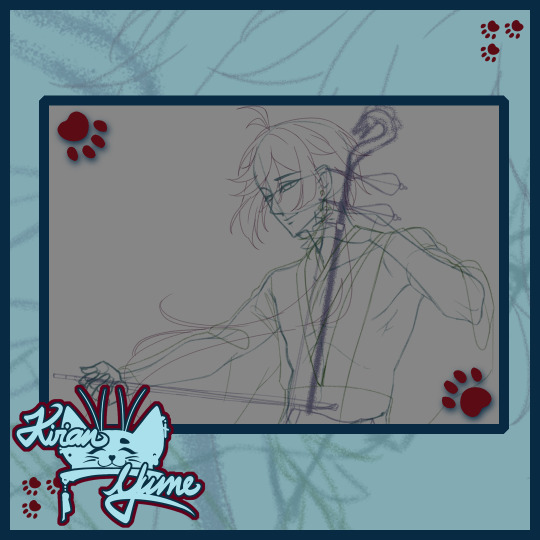






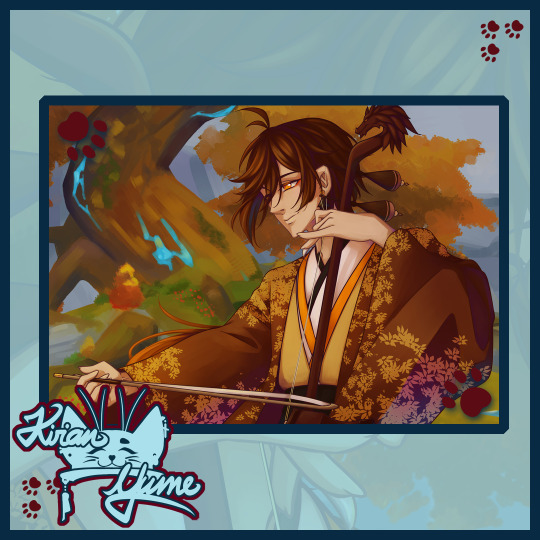
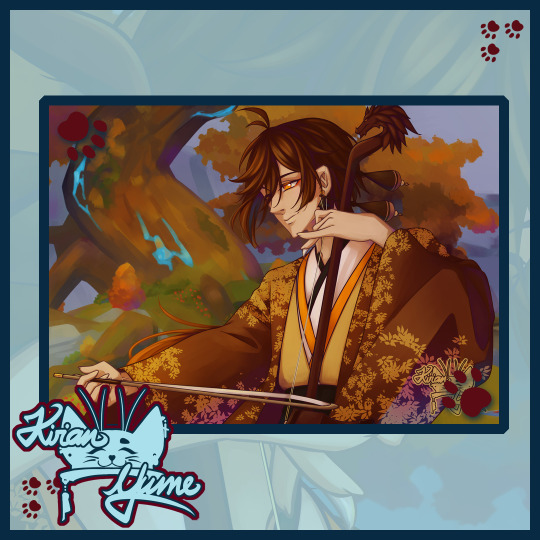
After half an eternity, here have something :'D I know, I already uploaded a very similar artwork... Literally the same sketch, too... But back when I drew Zhongli's Birthday Art, I wanted to do it again, putting way more time and effort into it. So... yeah, have Zhongli playing the Erhu again xD But much better, I feel. This Artwork did give me a hard time tho, because when I worked on it, I hated what I did. But... that's fine. it happens sometimes, because brains are like that sometimes. At least mine. I also - of course - painted the Dragonqueller of Nantianmen, so that I could it into the backgroud of this fanart, so yeah. I hope you like it! By the way, I upload on ko-fi quite regularily, if you didn't know! Twice a week, to be precise! And you can support me over there, too, if you want! :D
#digital artist#fanart#digital art#art on tumblr#artist on kofi#genshin zhongli#genshin impact zhongli#zhongli#genshinimpact art#genshinimpactfanart#genshin art#game fanart#erhu#string instrument#landscape#painting#drawing
13 notes
·
View notes
Text

Books and instruments means good mood.
#art#classical art#academia aesthetic#coffee aesthetic#dark academia#coffee and books#classical music#string instrument#booklover#books and coffee#books and reading#history
15 notes
·
View notes
Text
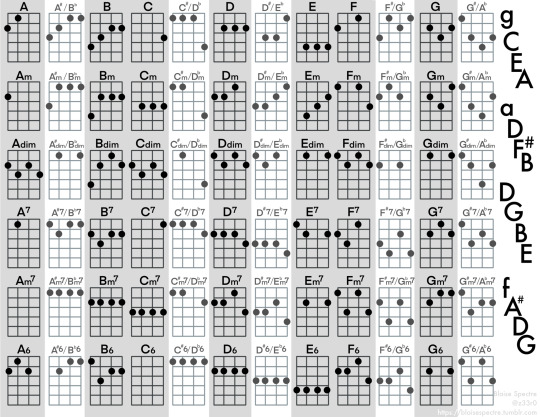
Made a chord chart for ukulele because the ones I found online didn’t have any flat or sharp chords, except it ONLY had Bb chords for some reason. It is designed to fit on a single piece of printer paper in landscape format, and print in black and white. The top right cluster of letters is the most common tuning, I threw the others on there in case it’s useful. I am a beginner at ukulele and originally just made this for myself but I thought I’d share in case someone might find it useful.
#ukulele#ukelele#chord chart#ukulele chord chart#ukelele chord chart#music theory#instrument#learn music#a bunch of these chords are not only exactly the same shape but also in the exact same place and idk why#string instrument#gCEA#I don’t know why the g is small and at this point I’m afraid to ask#graphic design is my passion I guess#the typeface is futura for anyone who is wondering. at least for the letters along the side I forget what the typeface is for the chord name#major#minor#diminished#major 7th#major 7#minor 7#minor 7th#6 chord#I did NOT proofread this so pls let me know if you spot a mistake
5 notes
·
View notes
Text
Types of String Musical Instruments
String instruments have knitted their musical magic throughout human history. It travels from cultures and generations. From the ancient lyres of Mesopotamia to the sophisticated violins of the Baroque era, these instruments have been integral to the evolution of music.
This blog will take you through the rich canvas of string. It will also remind you about how crucial it is to buy a dedicated string instrument insurance plan to protect your gear, irrespective of its type or family. Let's read on!
Meet the Members of the String Family
Plucked String Instruments: As the name suggests, the plucked string instruments make a sound when you pluck or strum their strings. Some of the best examples include the guitar, banjo, harp, and sitar.
Guitar: It is a versatile instrument that has a long neck and comes with typically six strings, although variations do exist. It is central to diverse musical genres, including rock, jazz, blues, and classical.
Banjo: With its roots of origin in Africa and adopted in the Americas, the banjo features a circular body and four to six strings. It is a prominent part of folk, bluegrass, and country music.
Harp: Characterized by its vertical frame and strings, it is one of the oldest string instruments. You would hear it in classical, folk, and Celtic music traditions.
Sitar: It is a plucked string instrument from India. It has a gourd-shaped body and movable frets. It plays a vital role in Indian classical music, with its intricate melodies and rhythmic patterns.
No matter which type of plucked string you play or own, make sure to secure it with the right insurance policy dedicated to musical instruments.
Bowed string instruments
Bowed string instruments produce sound when you vibrate their strings with a bow. The instruments that fall under this category are:
Violin: With its four strings and high-pitched sound, the violin is a cornerstone of classical orchestras. It also features prominently in various genres, including folk, jazz, and popular music.
Viola: Slightly bigger than the violin and tuned lower, the viola adds depth and richness to ensemble performances. It plays an essential role in classical chamber music and orchestras.
Cello: Also known as the violoncello, the cello has a deep, resonant tone. It is integral to orchestral arrangements, chamber music, and solo performances.
Double Bass: It is the largest and lowest-pitched instrument in the string family. It makes the base of the sound of bands. It is indispensable in classical, jazz, and contemporary music genres.

Fretted String Instruments
Fretted string instruments feature frets. The latter are metal strips implanted along the neck to mark specific musical intervals. Examples include the following:
Bass Guitar: Similar in appearance to the guitar but with a longer neck and fewer strings, the bass guitar produces lower frequencies and serves as the rhythmic backbone in many musical ensembles.
Ukulele: A small, four-stringed instrument with roots in Hawaii, the ukulele exudes a cheerful, bright sound. It is popular in folk, pop, and Hawaiian music styles.
Zither Family
Zithers are string instruments featuring a flat body with strings stretched across it. They are played by plucking or strumming the strings.
Autoharp: Equipped with buttons or keys that dampen specific strings, the autoharp enables players to create chords effortlessly. You can see them being used in folk and country music.
Appalachian Dulcimer: Originating from the Appalachian region of the United States, the dulcimer has a long, narrow body and fretted fingerboard. Musicians cherish it for its sweet, melodic tones.
Now that you are well aware of the broadness of string instruments, probably, you have also understood how delicate these pieces of art are. Isn’t it? So, if you own a string or are planning to buy one, do not give a second thought to buying a standalone string instrument insurance plan. This may seem just another piece of formal document to you in the first place. However, its benefits go beyond the same. It protects your gear from many unforeseen events that may make you fall into financial doldrums.
#string instrument#music#musicians#insurance#insurance coverage#musical instruments insurance#guitar
2 notes
·
View notes